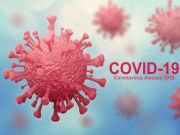101 clusters ID’d; transmission higher in non-health care occupational settings, community gatherings
FRIDAY, July 31, 2020 (HealthDay News) — Many of the first COVID-19 cases reported from affected countries outside of mainland China involved recent travel to affected countries, according to a study published online July 29 in The Lancet Infectious Diseases.
Fatimah S. Dawood, M.D., from the U.S. Centers for Disease Control and Prevention in Atlanta, and colleagues describe the global spread of severe acute respiratory syndrome coronavirus 2 and characteristics of COVID-19 cases before its characterization as a pandemic. Case characteristics, travel history, and exposures to other cases were extracted for cases reported between Dec. 31, 2019, and March 10, 2020.
The researchers found that 75 of the first cases reported from each of 99 countries outside of mainland China had recent travel to affected countries; 60 had traveled to China, Italy, or Iran. The median age was 51 years among 762 early cases (defined as those among the first 100 cases reported from each country) with age information; 3 percent of these cases occurred in children younger than 18 years. Of 1,200 cases with age and sex information, 2 percent were in health care workers and none were in pregnant women. There were 101 clusters; the most commonly identified transmission setting was households (76; mean, 2.6 cases per cluster), followed by non-health care occupational settings and community gatherings (14 [mean, 4.3 cases per cluster] and 11 [mean, 14.2 cases per cluster], respectively).
“Transmission settings of early COVID-19 clusters could provide insights into potential drivers of community transmission and can inform ongoing community mitigation efforts,” the authors write.
Copyright © 2020 HealthDay. All rights reserved.








